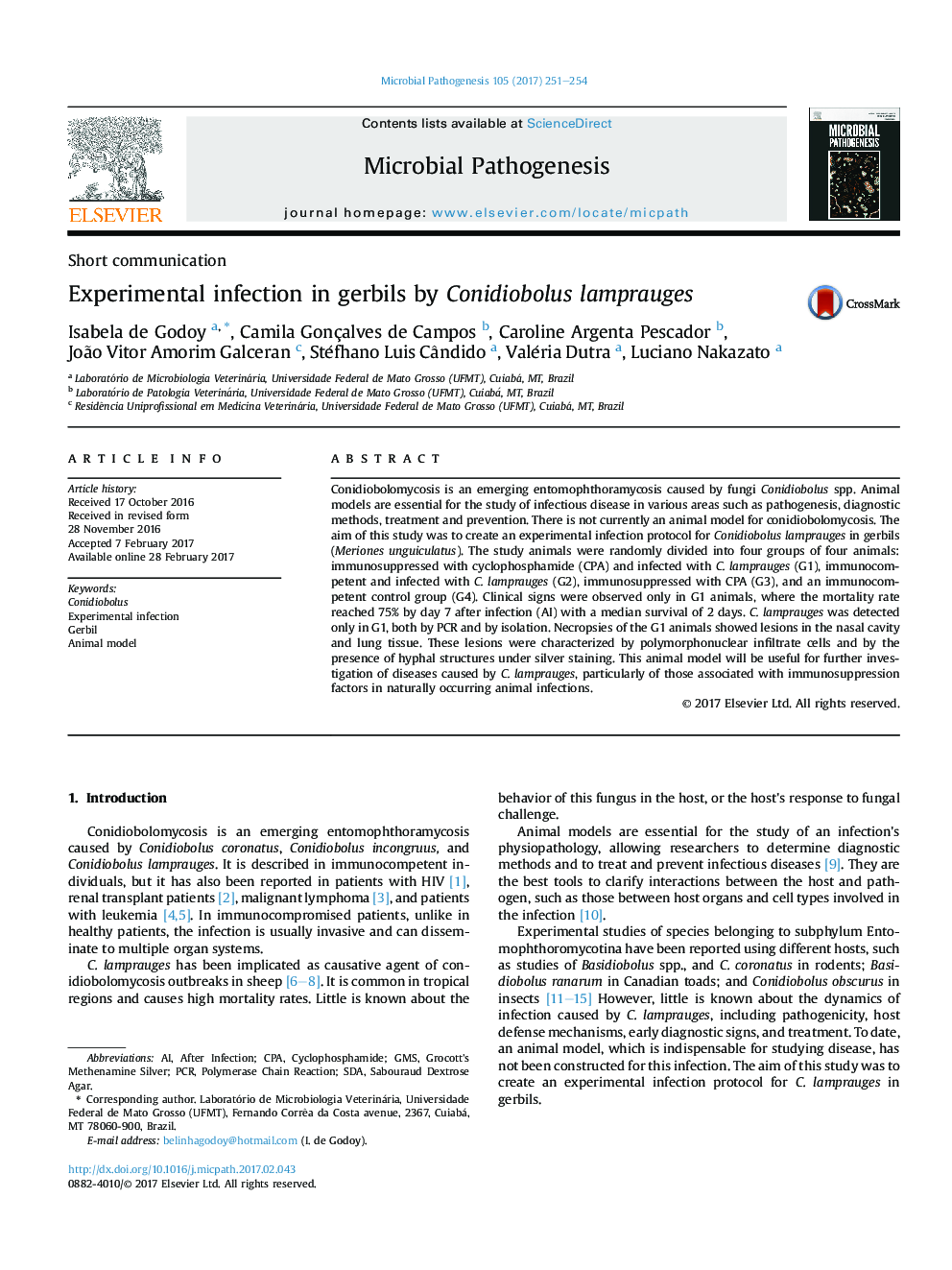| Article ID | Journal | Published Year | Pages | File Type |
|---|---|---|---|---|
| 5673833 | Microbial Pathogenesis | 2017 | 4 Pages |
Abstract
Conidiobolomycosis is an emerging entomophthoramycosis caused by fungi Conidiobolus spp. Animal models are essential for the study of infectious disease in various areas such as pathogenesis, diagnostic methods, treatment and prevention. There is not currently an animal model for conidiobolomycosis. The aim of this study was to create an experimental infection protocol for Conidiobolus lamprauges in gerbils (Meriones unguiculatus). The study animals were randomly divided into four groups of four animals: immunosuppressed with cyclophosphamide (CPA) and infected with C. lamprauges (G1), immunocompetent and infected with C. lamprauges (G2), immunosuppressed with CPA (G3), and an immunocompetent control group (G4). Clinical signs were observed only in G1 animals, where the mortality rate reached 75% by day 7 after infection (AI) with a median survival of 2 days. C. lamprauges was detected only in G1, both by PCR and by isolation. Necropsies of the G1 animals showed lesions in the nasal cavity and lung tissue. These lesions were characterized by polymorphonuclear infiltrate cells and by the presence of hyphal structures under silver staining. This animal model will be useful for further investigation of diseases caused by C. lamprauges, particularly of those associated with immunosuppression factors in naturally occurring animal infections.
Keywords
Related Topics
Life Sciences
Immunology and Microbiology
Microbiology
Authors
Isabela de Godoy, Camila Gonçalves de Campos, Caroline Argenta Pescador, João Vitor Amorim Galceran, Stéfhano Luis Cândido, Valéria Dutra, Luciano Nakazato,
